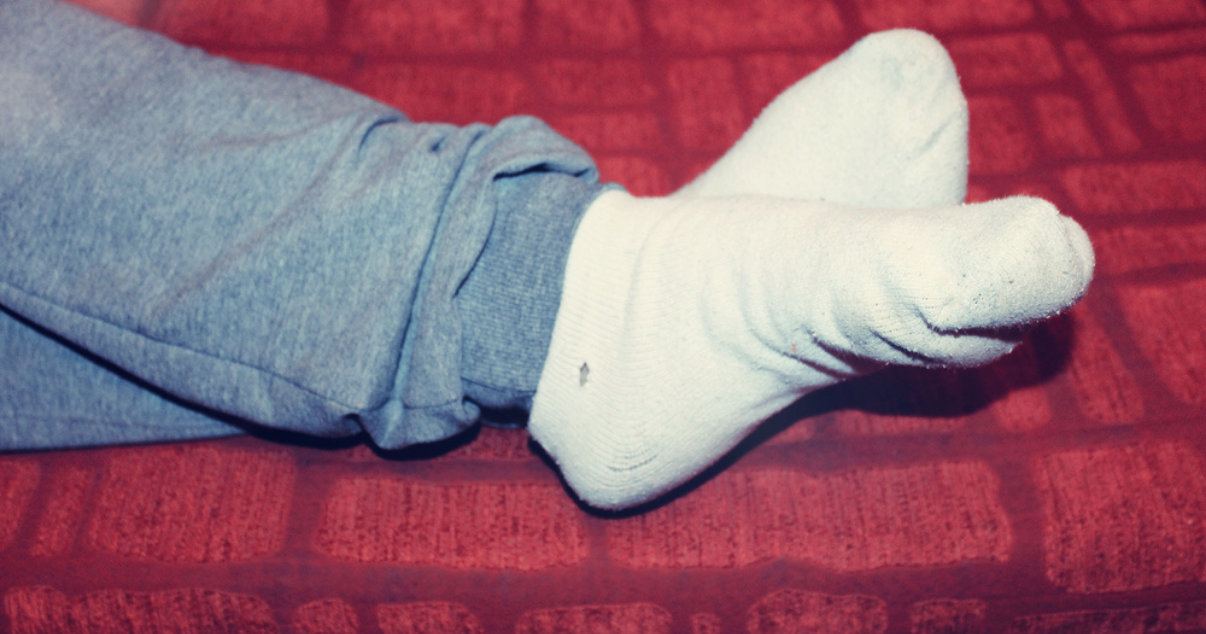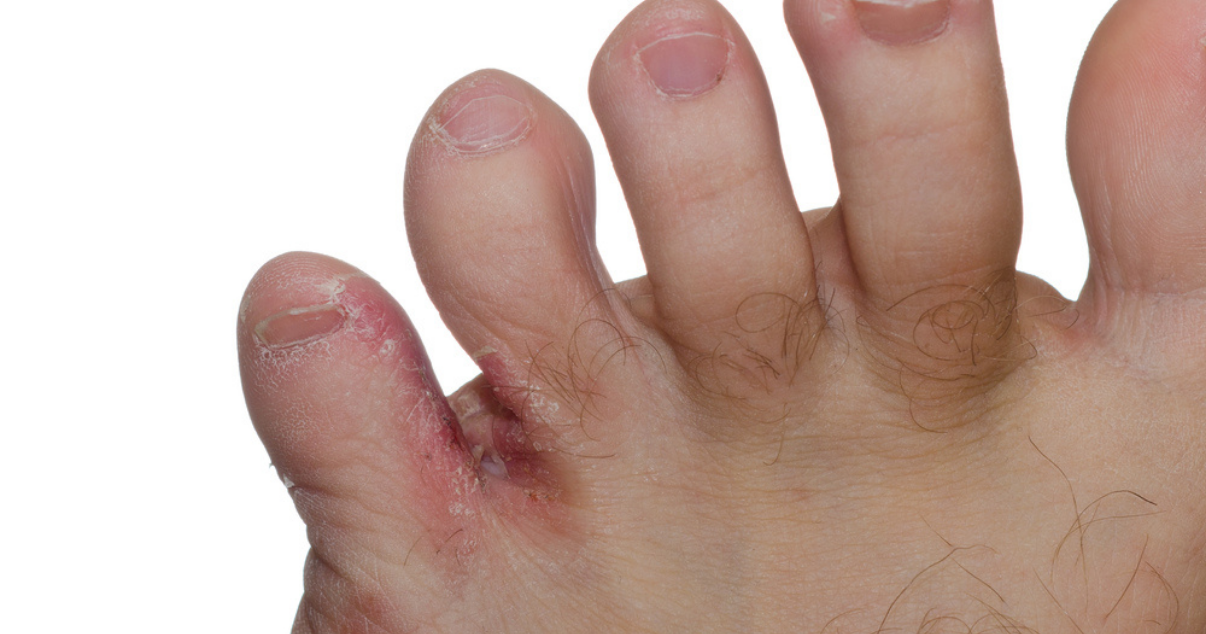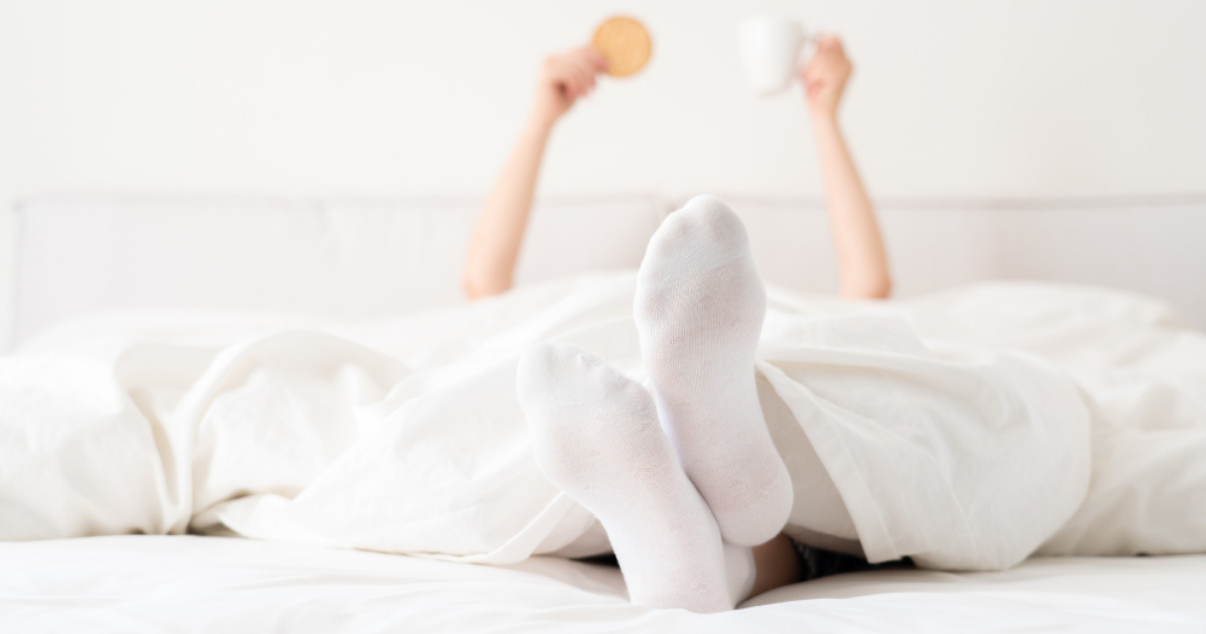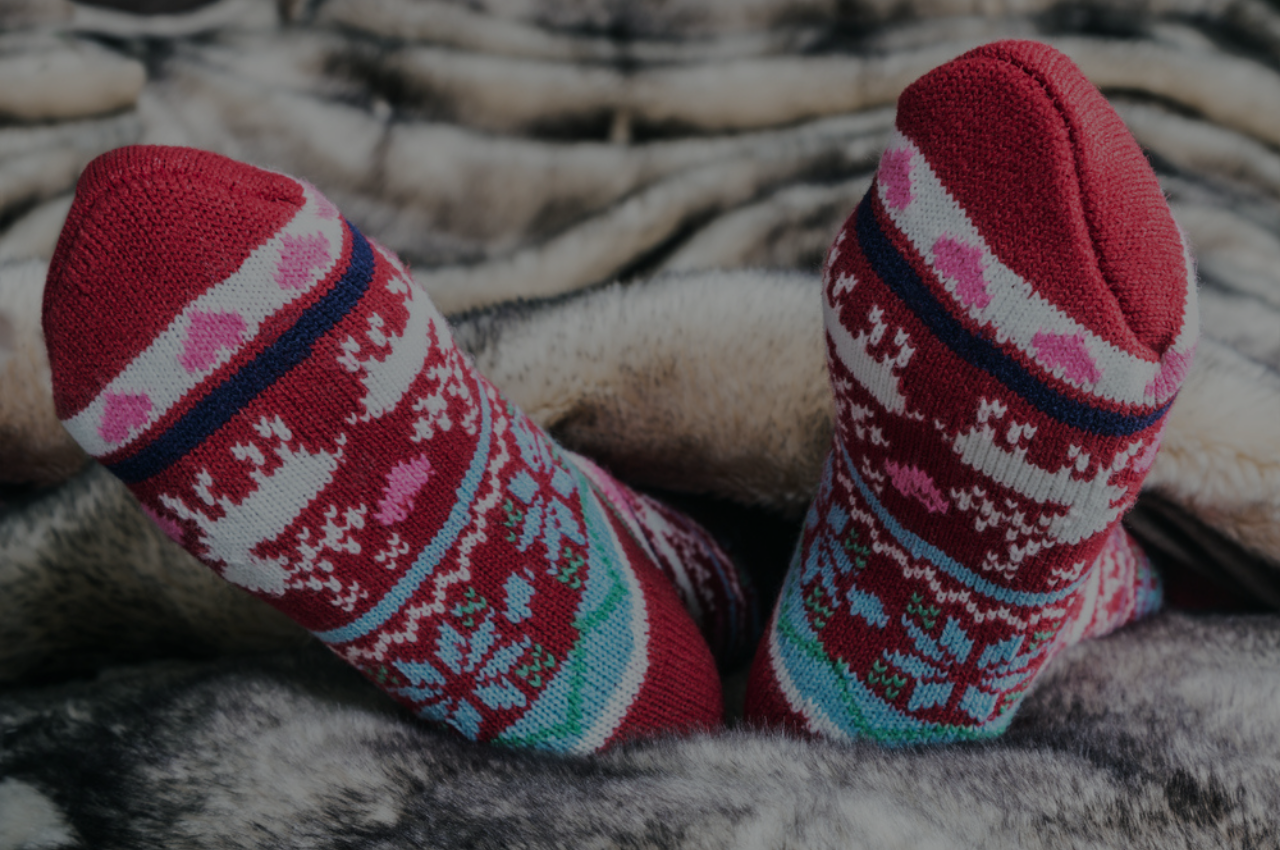As we’ve talked about in previous posts, a big part of good foot care is allowing your feet to breathe — long live flip flops and canvas shoes! That being said, there are times when it’s best to cover your feet, whether that’s to protect your feet from potential infection or to prevent the fungus from spreading. Today we’re sharing when it’s best to cover your feet and what are the most important factors to consider.
Should I Wear Socks to Bed with Athlete's Foot?
If you’re experiencing those uncomfortable and sometimes embarrassing athlete’s foot symptoms such as itchy, red, peeling skin on your feet, you are likely figuring out the best way to treat the infection and prevent it from spreading.
When you have an active athlete's foot infection, you should start treatment right away. Though when it is time to go to bed, you may be thinking ‘Should I wear socks to bed with athlete's foot?’ The simple answer — definitely!

Treating Athlete’s Foot
First things first, if you think you have athlete’s foot you’ll need to start an effective treatment immediately at the first sign of symptoms to ensure that the foot fungus goes away quickly and doesn’t turn into a chronic condition.
A cream that contains the active ingredient terbinafine, such as Silka Ⓡ Antifungal Cream gets to work quickly and treats most athlete’s foot in as little as 7 days.
That said, even the best athlete’s foot cream won’t be able to stay on your feet while you’re in bed unless you wear a pair of socks! Wearing clean cotton socks is a good idea since it will ensure the athlete's foot treatment stays on your feet where it should be and doesn’t go all over your bed linen or other parts of your body.
Even if you are applying Silka Ⓡ Antifungal Cream during the day, it’s best not to walk around barefoot otherwise you can risk having some of the cream rub off of your feet before it has a chance to fully absorb.
Before applying the cream, you should also always wash your feet with warm water and mild soap and dry them thoroughly with a clean towel. You should then consistently follow package instructions when applying the cream to ensure proper results.
Once you have applied the cream, put on a pair of fresh socks. Don’t be tempted to put on the same pair of socks that you have been wearing all day, since this will allow traces of foot fungus to deposit back on your feet.

Socks Help Prevent Athlete’s Foot from Spreading
Wearing clean socks while you sleep can also help prevent ringworm and jock itch infections. These uncomfortable itchy infections are caused by the same fungus as athlete’s foot and usually appear on the inner thigh and groin area. Without socks, it’s easy for your athlete’s foot fungal infection to come into contact with other parts of the body and develop into an infection. Learn more about jock itch in our blog post, What is Jock Itch?
If you sleep next to a partner, wearing socks can also help prevent you from passing the fungal infection to them. Without socks, there isn’t a barrier between your athlete’s foot infection and other body parts, which can make the spreading of the contagious fungal infection very easy.

The Key to Success - Good Foot Care and Hygiene
The best socks for athlete's foot are those made from natural fibers like cotton.These fibers allow your feet to breathe more and prevents them from getting too hot and sweaty. Synthetic materials can encourage your feet to sweat more and cause hot and humid conditions that are perfect for the foot fungus to thrive.
Change your socks in the morning. Always go to bed wearing a clean pair of socks and then in the morning take them off and wash your feet thoroughly with warm water and mild soap. You should then always make sure to put on another clean pair of socks to prevent athlete's foot reinfection.
Wash your bed linen and clothes regularly. If you suspect you already have the fungal foot infection, you should wash everything at a high temperature to ensure you kill the fungal spores. The fungus can sometimes linger on fabrics for a while and the best way to ensure this isn’t the case is to wash everything the fungus may have come into contact with.
Wash your shoes regularly. Washing your shoes, especially your sneakers, is key to preventing an athlete’s foot reinfection. Check out our guide to washing shoes to prevent athlete’s foot.
Wearing socks to bed is a great way to ensure that your athlete’s foot treatment is successful, and that you prevent the spread of athlete’s foot to others and other parts of your own body. For more information on how to treat athlete’s foot, take a look at our post Choosing the Right Athlete’s Foot Treatment.
Take care!




